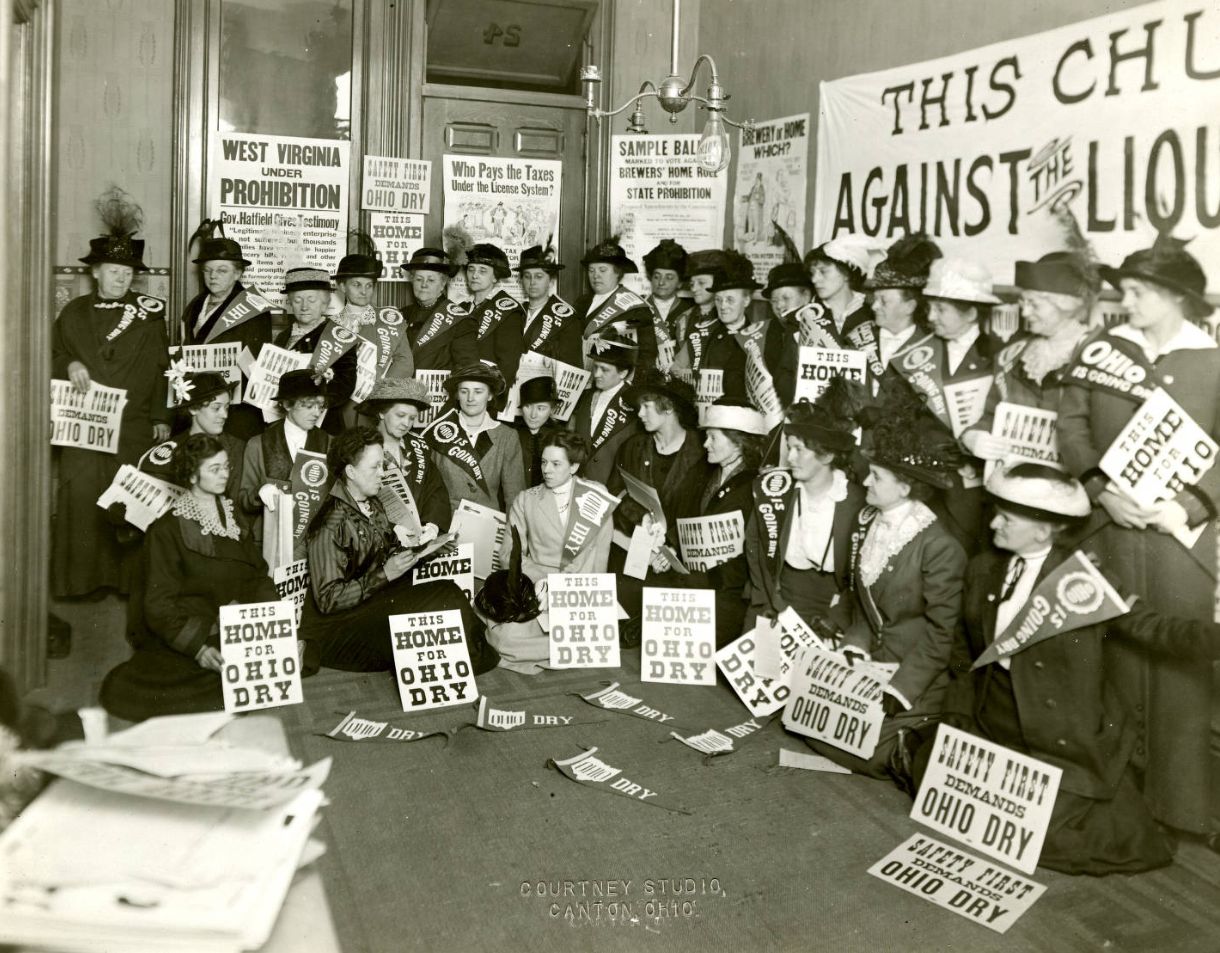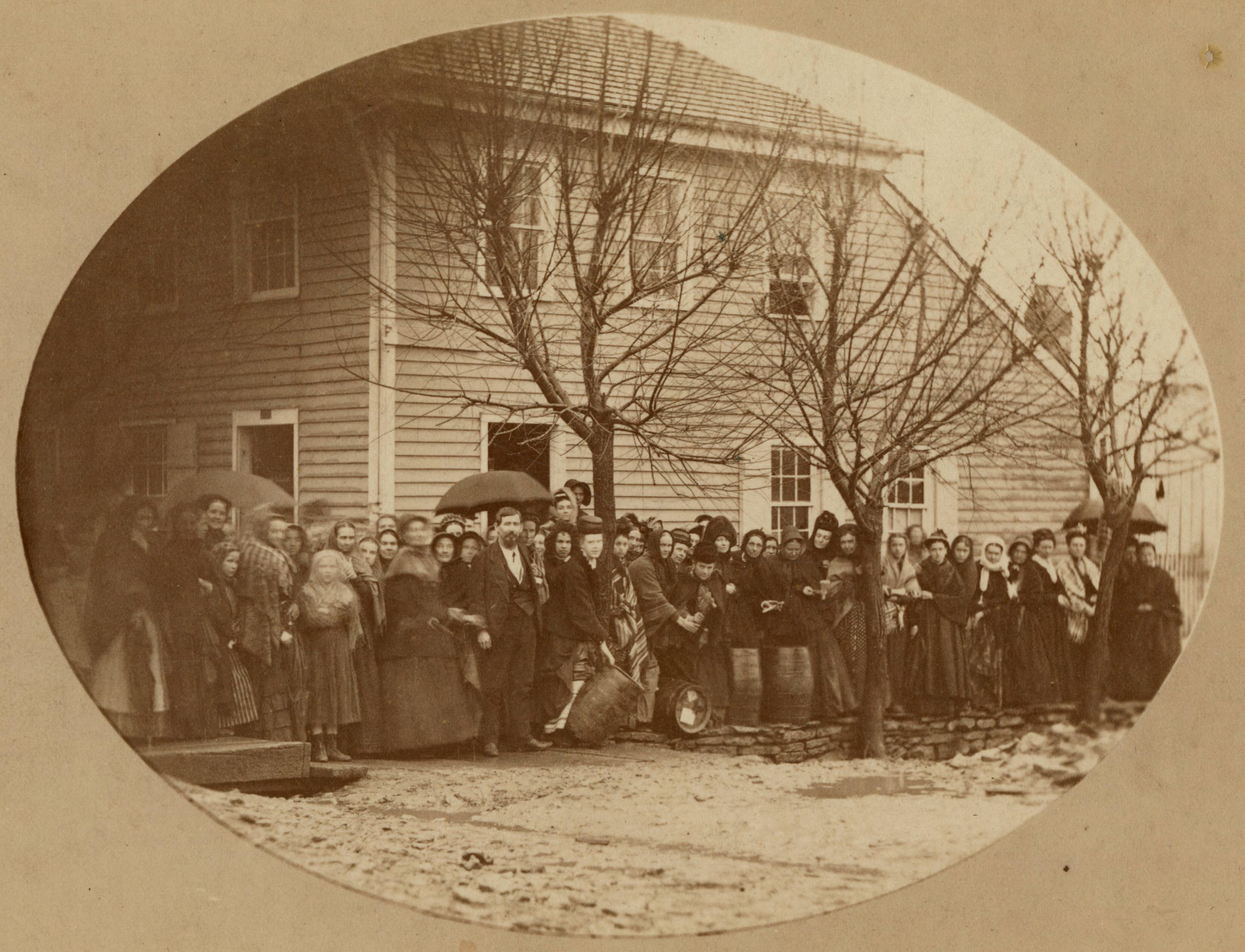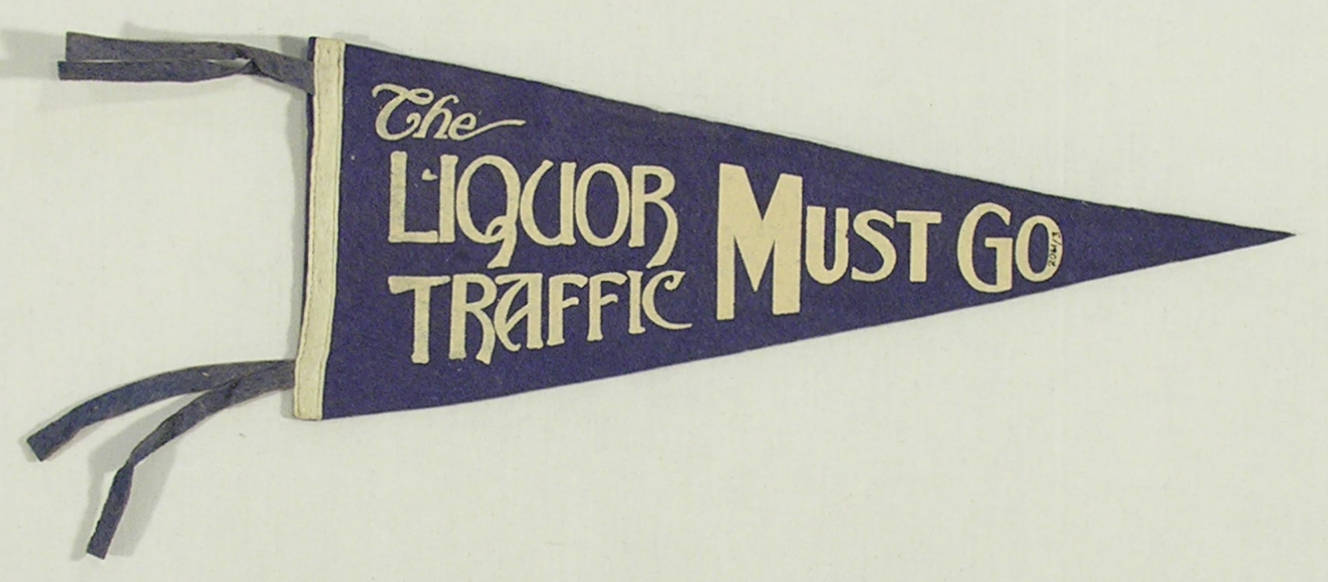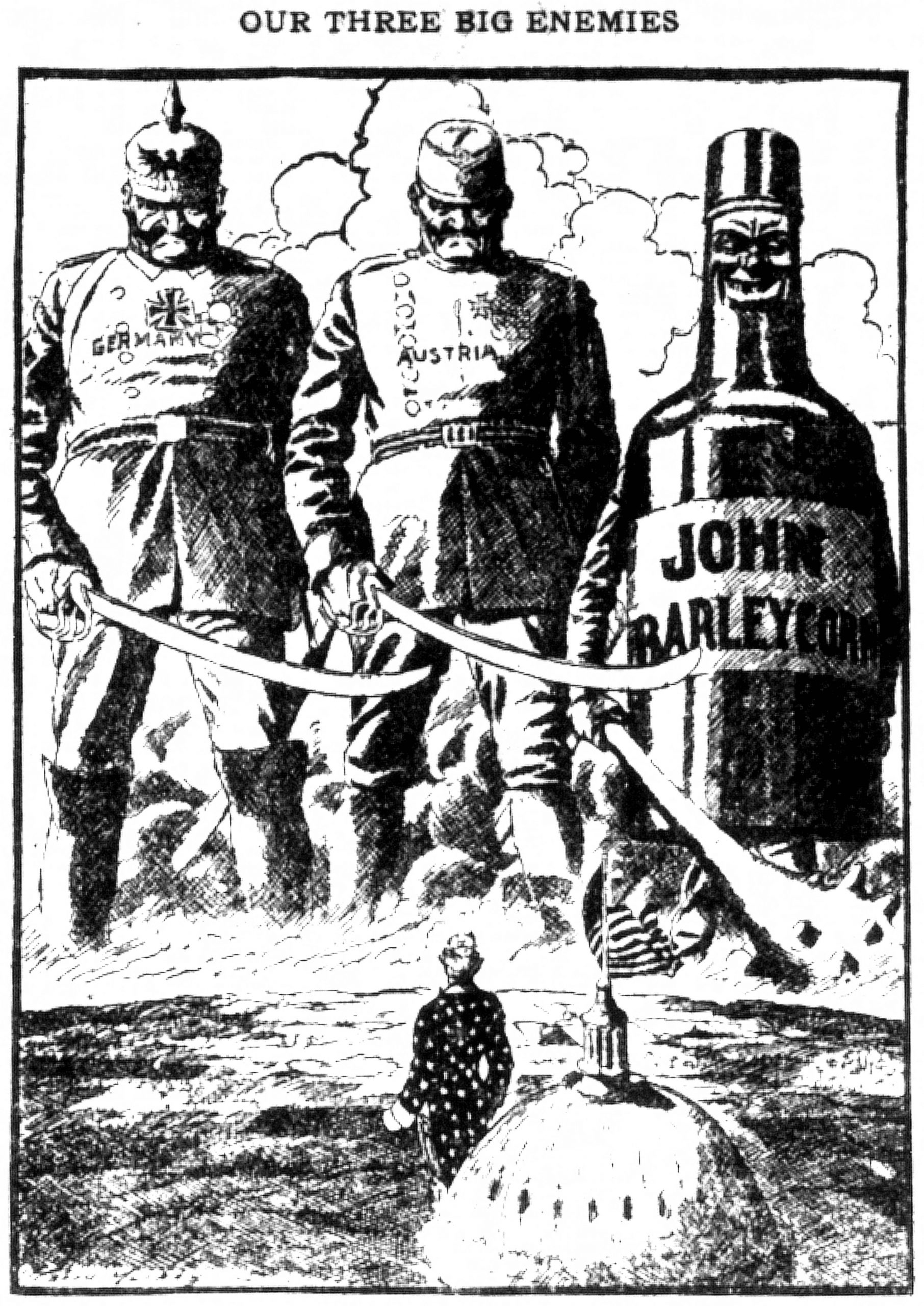Prohibition 100 Years Later


2020 marks the 100th anniversary of Prohibition in the United States. Ohio fought for the dry vote as a key player in the anti-alcohol movement, even from its beginnings in the first half of the 19th century, nearly 200 years before the passage of the 18th Amendment. Several collections on Ohio Memory, which is also celebrating an exciting milestone this year (20 years!), document Ohio’s important role in achieving Prohibition.
Many Americans, especially women, fought against saloons and the liquor business as early as the 1820s, but organizations with national reach didn’t form until the 1870s—the Women’s Christian Temperance Union (WCTU) among them. The WCTU was formed in 1873 in Hillsboro, Ohio, and later moved to Cleveland in 1874. Their methods of activism included holding vigils and protests and circulating petitions to persuade saloon owners to close their doors and dump their booze. WCTU members were driven by religious beliefs regarding alcohol consumption, and were concerned with related issues like public health and sanitation, but also other contemporary issues, like suffrage and better working conditions. Because they usually did not have earned income of their own, women were vulnerable to homelessness and financial ruin if their husbands spent their paychecks at saloons (where they could be seduced by other unsavory activities, such as gambling and prostitution), and were therefore some of the biggest advocates for Temperance and Prohibition.

The Anti-Saloon League, another Ohio-based organization, led national Temperance and Prohibition campaigns during the height of the movement in the early 20th century. In addition to overseeing its overall operations as the leading national player in the Prohibition movement, the Anti-Saloon League also managed its magazine, the American Issue, out of its Westerville office. The American Issue was a weekly periodical produced by the American Issue Publishing Company, a holding of the Anti-Saloon League. When Westerville residents offered property to the Anti-Saloon League of America for the construction of a printing plant, the League moved its headquarters from Washington, D.C., to Westerville, a place with strong roots in the anti-alcohol movement.

U.S. entry into World War I in 1917 propelled the movement forward, and the League fought for wartime Prohibition. Anti-German sentiment gave the League leverage against the saloons, especially because most brewers were of German descent. Additionally, at a time when Americans were conserving food and other resources for use overseas, using grains to manufacture beer and liquor was treated as food snatched from the hands of starving American soldiers. The American Issue featured many cartoons portraying American alcohol consumption fueling German forces, brewers in cahoots with the Kaiser, and Uncle Sam up against John Barleycorn, a personified bottle of booze used to represent the liquor traffic. This laid the groundwork for the ratification of the 18th Amendment on January 16, 1919, which prohibited the production, sale and transport of alcohol.
Visit Ohio Memory to explore photographs, letters, pamphlets, political cartoons, Ohio Dry Federation materials and more to experience Ohio’s role in the movement that led to the ever-fascinating era of bootleggers and speakeasies! Check back with us soon for more highlights of other historic centennials in 2020!
Thanks to Kristen Newby, Digital Projects Coordinator, for this week’s post!
Ohio Memory is celebrating 20 years! Visit our blog all year long to learn more about our program, partners and collections!



Leave a Reply
You must be logged in to post a comment.